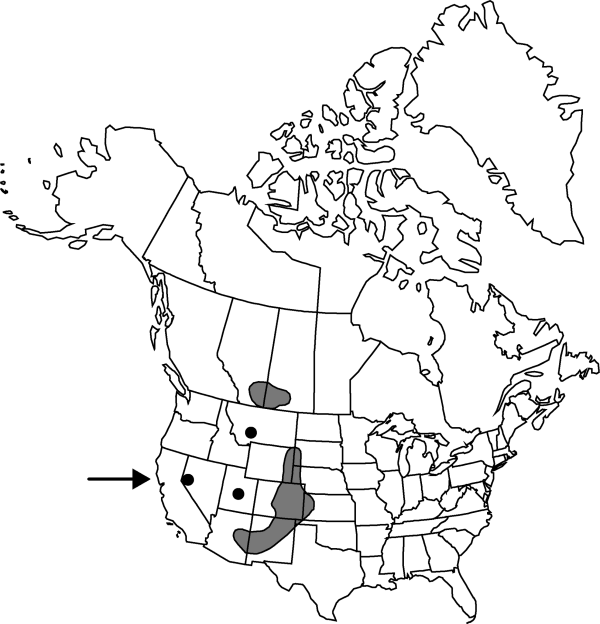Chenopodium watsonii
Bot. Gaz. 34: 362. 1902.
Stems erect or ascending to decumbent, branched from base, 1–4.5 dm, sparsely to densely farinose. Leaves aromatic; petiole 0.4–1.4 cm; blade broadly rounded-triangular to rounded-rhombic or ovate, 1–2.6 × 0.5–2.9 cm, base rounded or subtruncate or broadly cuneate, margins entire or proximal leaves with 1–2 teeth on each side at base, apex rounded to obtuse or acute or apiculate, densely farinose on both surfaces. Inflorescences glomerules in paniculate spikes, 14–24 × 2–3 cm, maturing irregularly; bracts leaflike. Flowers: perianth segments 5, connate into 0.3 mm tube; lobes ovate, keeled, 1–1.4 × 0.9–1.2 mm, apex acute to obtuse, farinose, enclosing fruit at maturity; stamens 5; stigmas 2. Achenes ovoid; pericarp adherent, usually strongly whitened, honeycombed. Seeds subglobose, 0.9–1.3 mm diam., margins obtuse; seed-coat whitened, coarsely honeycombed. 2n = 18.
Phenology: Fruiting late summer–fall.
Habitat: Woods and shrublands of various types, badlands, erosion breaks in prairies, volcanic rocks, pinyon and juniper, sagebrush, disturbed ground, old mine areas, roadsides
Elevation: 600-3200 m
Distribution

Alta., Sask., Ariz., Calif., Colo., Kans., Mont., N.Mex., S.Dak., Utah, Wyo.
Discussion
Selected References
None.
Lower Taxa
"narrower" is not a number."dm" is not declared as a valid unit of measurement for this property.
